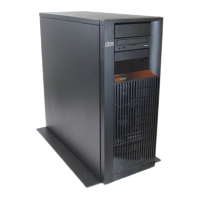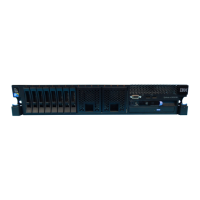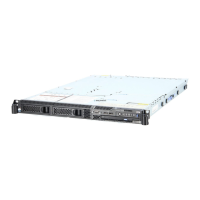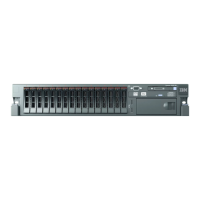Symptom Description INT-PIPs
System becomes
powered off.
The system was operating correctly, then the system
became powered off. SRC 0000 111x may occur when this
happens, but the SRC information is lost if the customer
performs an IPL after the failure and does not record the
SRC.
Notes:
1. If the system has no workstation I/O processor cards,
omit INT-PIP5.
2. If the system has an uninterruptable power supply,
perform “INT-PIP9 Utility power and battery power units”
on page 112.
“INT-PIP5 External noise on
twinaxial cables” on page 109,
“INT-PIP9 Utility power and
battery power units” on page 112
System stops. The system is powered on but is not operating correctly. No
SRC or error code is displayed. The System Attention light
is off. The Processor Activity lights may be on or off. Noise
on the power-on reset line can cause the processor to stop.
Note: Ensure that the latest service processor PTF for your
release is installed.
“INT-PIP18 PTFs not installed” on
page 114
System or
subsystem runs
slow.
The system or the subsystem is not processing at its normal
speed (for example, QBATCH).
“INT-PIP20 Performance
problems” on page 115
If the symptom for the intermittent problem you have is not listed, go to “Failing area INT-PIPs.”
Failing area INT-PIPs
For use by authorized service providers.
Use this table only if you do not have a system reference code (SRC), or cannot find your symptom in
Table 1. Intermittent symptoms (See page 16) in the Analyzing intermittent problems topic.
1. Perform all of the steps in “General intermittent problem checklist” on page 13 for all failing areas.
Then, continue with the next step.
2. Refer to Table 1. Failing area INT-PIPs below, and perform the following:
a. Find the specific area of failure under Failing area.
b. Look down the column of the area of failure until you find an X.
c. Look across to the INT-PIP column and perform the INT-PIP indicated.
d. If the INT-PIP does not correct the intermittent problem, continue down the column of the area of
failure until you have performed all of the INT-PIPs shown for the failing area.
3.
Although an INT-PIP may correct the intermittent problem, use your best judgment to determine if you
should perform the remainder of the INT-PIPs shown for the failing area.
Table 1. Failing area INT-PIPs
Failing area
Intermittent
PIP to
perform:
Power WSIOP DASD
MSIOP
Comm Processor
Bus
Tape
optical
Perform all
steps in:
X X X X X X “General
intermittent
problem
checklist” on
page 13
Analyze hardware problems 17
